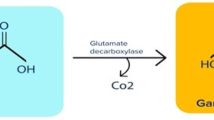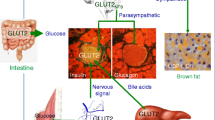Abstract
The possible involvement of the L-arginine-containing Phe-met-arg-phe (FMRF)-amide (FMRFa) in neuronal nitric oxide (NO) biosynthesis was studied in a gastropod species. We found NADPH-diaphorase-positive neurons and FMRFa-containing fibers in close proximity in the enteric nervous system. Administration of L-arginine and FMRFa induced quantitatively similar nitrite production in both intact intestinal tissues and tissue homogenates. These changes could be prevented by the presence of NOARG (an NO synthase inhibitor). Neither chemically modified FMRFa (D-arginine instead of L-arginine) nor amino acid constituents of FMRFa (methionine, phenylalanine) affected basal nitrite production. FMRFa-induced alterations were reduced in the presence of Na+ channel blockers (tetrodotoxin, amiloride, lidocaine), the Na+/K+ATPase inhibitor ouabain, or protease inhibitors (leupeptine, pepstatine-a). FMRFa and its amino acid constituents were analyzed by paper chromatography. When FMRFa was added to tissue homogenates, the peptide was eliminated within 1–2 min, whereas methionine, phenylalanine, arginine, and citrulline levels were elevated simultaneously. We tested the effects of FMRFa, L-arginine, and NOARG on intestinal contractile activity. FMRFa relaxed the intestine for 1–2 min and then induced contractions for 20–40 min. In the presence of NOARG, no relaxant effect of FMRFa was recorded. As administration of L-arginine strongly inhibits the mechanical activity of the intestinal muscle, NO production presumably plays a substantial role in the action of FMRFa, at least in the initial phase. Our biochemical data indicate a direct involvement of FMRFa in NO biosynthesis. FMRFa might be hydrolyzed by extracellular peptidases and then the locally released arginine might be transported into the cells and broken-down to produce NO. Depolarization-induced NO production attributable to the activation of amiloride-sensitive Na+ channels might also be involved.






Similar content being viewed by others
References
Borcherding H, Leikefeld S, Frey C, Diekmann S, Steinrucke P (2000) Enzymatic microtiter plate-based nitrite detection in environmental and medical analysis. Anal Biochem 282:1–9
Bredt DS, Snyder SH (1994) Nitric oxide: a physiologic messenger molecule. Annu Rev Biochem 63:75–195
Cazzamali G, Grimmelikhuijzen CJP (2002) Molecular cloning and functional expression of the first insect FMRFamide receptor. Proc Natl Acad Sci USA 99:12073–12078
Cottrell GA (1997) The first peptide gated ion channel. Exp Biol 18:2377–2386
Guevara I, Iwanejko J, Dembinska-Kiec A, et al (1998) Determination of nitrite/nitrate in human biological material by the simple Griess reaction. Clin Chim Acta 274:177–188
Huang S, Kerschbaum HH, Engel E, Hermann A (1997) Biochemical characterization and histochemical localization of nitric oxide synthase in the nervous system of the snail, Helix pomatia. J Neurochem 69:2516–2528
Huang S, Kerschbaum HH, Hermann A (1998) Nitric oxide-mediated cGMP synthesis in Helix neural ganglia. Brain Res 780:329–336
Johnson EM Jr, Koike T, Franklin J (1992) A “calcium set-point hypothesis” of neuronal dependence on neurotrophic factor. Exp Neurol 115:163–166
Marzinzig M, Nussler AK, Stadler J, et al (1997) Improved methods to measure end products of nitric oxide in biological fluids: nitrite, nitrate, S-nitrosothiols. Nitric Oxide 1:177–189
Mayer B, Andrew P (1998) Nitric oxide synthase: catalytic function and progress towards selective inhibition. Nauny-Schmiedebergs Arch Pharmacol 358:127–133
Meng O, Choudry HA, Souba WW, Karinch AM, Huang J, Lin C, Vary TC, Pan M (2005) Regulation of amino acid arginie transport by lipopolysaccharide and nitric oxide in intestinal epithelial IEC-6 cells. J Gastrointest Surg 9:1276–1285
Mercier AJ, Friedrich R, Boldt M (2003) Physiological functions of FMRFamide-like peptides (FLPs) in crustaceans. Microsc Res Tech 60:313–324
Miller RD, Hondeghem LM (1995) Local anesthetics. In: Katzung BG (ed) Basic and clinical pharmacology. Appleton and Lange, Norwalk, pp 399–400
Muneoka Y, Kobayashi M (1992) Comparative aspects of structure and action of molluscan neuropeptides.Experientia 48:448–456
Nichols R, Bendena WG, Tobe SS (2002) Myotropic peptides in Drosophila melanogaster and the genes that encode them. J Neurogenet 16:1–28
Olgart C, Gustafson LE, Wiklund NP (2000) Evidence for nonvesicular nitric oxide release evoked by nerve activation. Eur J Neurosci 12:1303–1309
Ostrovskaya O, Moroz L, Krishtal O (2004) Modulatory action of RFamide-related peptides on acid-sensing ionic channels is pH dependent: the role of arginine. J Neurochem 91:252–255
Perry SJ, Straub VA, Schofield MG, Burke JF, Benjamin PR (2001) Neuronal expression of an FMRFamide-gated Na+ channel and its modulation by acid pH. J Neurosci 21:5559–5567
Rasmusen C, Cynober L, Couderc R (2005) Arginine and statins: relationship between the nitric oxide pathway and the atherosclerosis development. Ann Biol Clin 63:443–455
Rőszer T, Jenei Zs, Gáll T, et al (2004a) A possible stimulatory effect of FMRFamide on neuronal nitric oxide production in the central nervous system of Helix lucorum L. Brain Behav Evol 63:23–33
Rőszer T, Czimmerer Zs, Szentmiklósi AJ, Bánfalvi G (2004b) Nitric oxide synthesis is blocked in the enteral nervous system during dormant periods of the snail, Helix lucorum. Cell Tissue Res 316:255–262
Santana N, Benjamin PR (2000) Gene expression and function of FMRFamide-related neuropeptides in the snail Lymnaea. Microsc Res Tech 49:547–556
Schmidlin A, Fischer S, Wiesinger H (2000) Transport of L-citrulline in neural cell cultures. Dev Neurosci 22:393–398
Tang J, Yang H-YT, Costa E (1984) Inhibition of spontaneous and opiate-modified nociception by an endogenous neuropeptide with Phe-Met-Arg-Phe-NH2 like immunoreactivity. Proc Natl Acad Sci USA 81:5002–5005
Yang HY, Majane EA (1990) Mammalian Phe-Met-Arg-Phe-NH2-like peptides: structure, biological activity and distribution. Prog Clin Biol Res 342:86–91
Wiseman G (1974) Active absorption of amino acids in vivo.In: Mason LA (ed) Bioembranes, vol 4A. Plenum, London, New York, pp 380–384
Wood J, Garthwaite J (1994) Models of the diffusion spread of nitric oxide: implications for neural nitric oxide signaling and its pharmacological properties. Neuropharmacology 33:1235–1244
Acknowledgements
The skillful help of Mr. D. Rózsa and Mr. I. Schmelczer is gratefully acknowledged. We thank our colleagues for their amiable support of our daily travail.
Author information
Authors and Affiliations
Rights and permissions
About this article
Cite this article
Rőszer, T., Kiss-Tóth, É., Petkó, M. et al. Phe-met-arg-phe (FMRF)-amide is a substrate source of NO synthase in the gastropod nervous system. Cell Tissue Res 325, 567–575 (2006). https://doi.org/10.1007/s00441-006-0185-5
Received:
Accepted:
Published:
Issue Date:
DOI: https://doi.org/10.1007/s00441-006-0185-5




